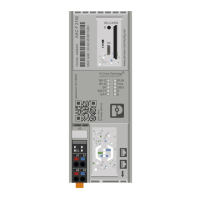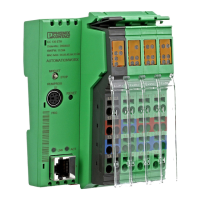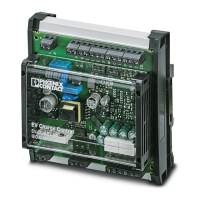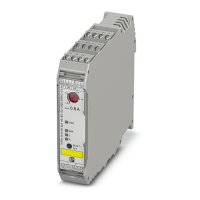Transport and unpacking
107709_en_00 PHOENIX CONTACT 13 / 140
2 Transport and unpacking
2.1 Transport
The device is delivered in cardboard packaging.
• Only transport the device to its destination in its original packaging.
• Please note the instructions regarding handling, moisture, shock, tilt, and temperature
indicators on the packaging.
• Observe the humidity specifications and the temperature range specified for transport
(see Section “Technical data” on page 125).
• Protect the surfaces and frame as necessary to prevent damage.
• When transporting the equipment or storing it temporarily, make sure that the surfaces
are protected from the elements and any external influences, and that they are kept dry
and clean.
2.2 Storage
The storage location must meet the following requirements:
– Dry
– Protected from unauthorized access
– Protected from harmful environmental influences such as UV light
– Temperature range: -40°C ... +85°C
– Air pressure: 58 kPa ... 106 kPa (up to 4500 m above sea level)
– Permissible humidity: 10% ... 95%, (non-condensing, non-icing)
2.3 Checking the delivery
• Check the delivery for transport damage.
Damaged packaging is an indicator of potential damage to the device that may have oc-
curred during transportation. This could result in a malfunction.
• Submit claims for any transport damage immediately, and inform Phoenix Contact or
your supplier as well as the shipping company without delay.
• Enclose photos which clearly document the damage to the packaging/delivery together
with your claim.
• Immediately after delivery, refer to the delivery note to check that the contents of the
packaging are complete.
• Keep the box and packaging material in case it is necessary to return the product.
• We strongly recommend using the original packaging to return the product.
• If the original packaging is no longer available, observe the following points:
– Observe the humidity specifications and the temperature range specified for trans-
port (see “Ambient conditions” on page 125).
– If necessary, use dehumidifying agents.
– Use appropriate ESD packaging to protect components that are sensitive to elec-
trostatic discharge.
– Make sure that the packaging you select is large enough and sufficiently thick.

